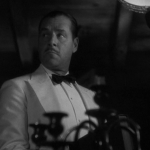 |
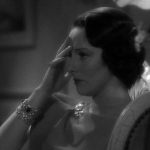 |
 |
| Stephen Lane Jack Holt |
Juanita Perez Lane Dorothy Burgess |
Gail Hamilton Fay Wray |
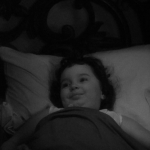 |
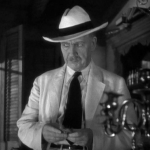 |
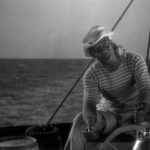 |
| Nancy Lane Cora Sue Collins |
Dr. Raymond Perez Arnold Korff |
‘Lunch’ McClaren Clarence Muse |
| Released by Columbia | Directed By Roy William Neill |
||
Proof That It’s Pre-Code
- Terribly, horribly politically incorrect.
- “What’s wrong with all of the wonderful men, the one thing a girl keeps running into? He’s married. […] I won’t live in sin. Mostly because he hasn’t asked me.”
- Blood!
Black Moon: A Thin Line Between Love and Hate
Juanita Lane’s got a problem. She has a nice husband and a beautiful daughter, but life in their upscale New York penthouse seems to be suffocating her. Having grown up on her family plantation in the Caribbean, Juanita often finds herself banging the drums as she heard the natives do in her childhood. It haunts her.
She wants to go back to San Christopher, but her husband is skeptical. Stephen’s a big chinned, big hearted, big businessman. To keep Juanita and their daughter, Nancy, safe, he sends his private secretary Gail along with his wife. Gail’s got a problem of her own, though that has to do with her less-than-secretarial feelings for her boss. However, Stephen may be on to something– the plantation’s supervisor is murdered before he can warn Stephen to keep his wife away.
Juanita, Nancy, Gail and Nancy’s nursemaid, Anna, arrive on San Christopher to a celebration. Juanita’s uncle, Dr. Raymond Perez, is horrified by this. As the only white man on the island and by far the richest person, he keeps himself in a palatial fortress while most of the natives are still stuck in grass huts. Juanita’s arrival represents a change in the balance of power, perhaps conclusively.

Welcome home, Juanita!
White audiences may naturally assume that voodoo is the only thing that could draw Juanita back to San Christopher– Perez certainly believes it is– but it’s easy to watch the movie and assume that dark magic plays no part in her desires.
The island has been in her family for generations and survived a half dozen native uprisings to this point. The last one claimed her parents and left her in the hands of the natives for a period of time, and it’s obvious that it’s sparked a sense of rebellion in her. Her desire to return to the island may be of a personal reckoning, a resolution to her family’s legacy in one way or another, or a way for her to discover herself and become free from the thankless burdens she’s shouldered in white society as a mother, a landowner, and a wealthy woman since.
On one hand, the movie looks a lot like a riff on The Mask of Fu Manchu, that Boris Karloff flick about a sinister Asian man seeking to conquer the world by way of destroying the white race and breeding with their women (yes, it’s nuts). The black natives are uniform in their sinister looks and insidious plotting. They also speak exclusively in French, upping the disconnect. Their rituals are infused with snakes, dancing, and, of course, human sacrifice. But that sense of otherness also works to make the audience conscience of their plight, as we see that they’ve been left behind by Perez’s good fortune. The ornate gates on Perez’s plantation keeps him safe from attack– and them away from any sense of equality or freedom.
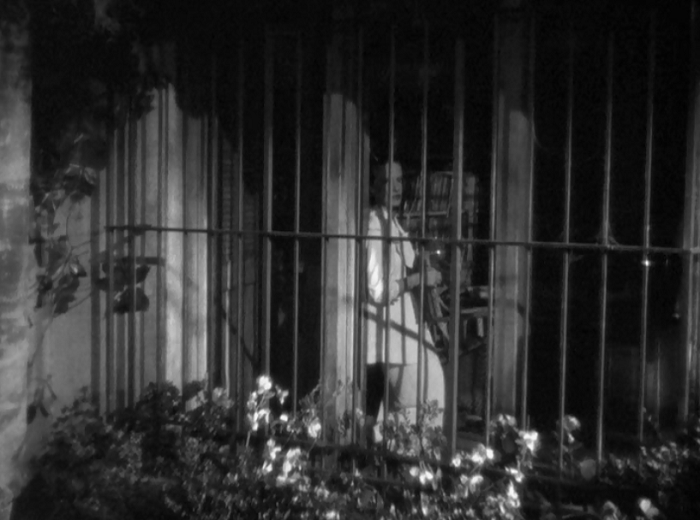
She’s trapped– trapped!
The nursemaid Anna is constantly sparring with the native women who proffer young Nancy machetes and other sinister whisperings. Gail gets a sense of what’s going on and sends a wire for Stephen to come to San Christopher post haste– only to find the wire operator has hung himself once he realizes what he’s done.
By the time Stephen arrives, conflict is inevitable. Juanita wanders the island at night, while he and Perez stay firmly behind the gates. The sound of beating drums fill the humid air, as the two men furtively survey their arsenal and smoke cigars in their evening tuxes, waiting. Just look at the way Perez handles that rifle, that glint in his eye– yikes.
Things get worse. Anna’s charred corpse is discovered in the local lava pits. (Side note and specific nitpick: I’m not sure why Gail wanted to find the doctor so badly, since ‘complete immolation by lava’ isn’t known to be curable.) The schooner they were supposed to leave the island on is stolen. And the schooner’s captain, Lunch, takes Stephen to the remote regions of the island where they see Juanita give a pagan dance before Lunch’s girl brutally put up for sacrifice. One shot from Stephen’s pistol is all it takes to finally tip the conflict to the boiling point.

Stephen and Lunch, best buds.
The film has a lot going for it. Director Roy William Neill (Whirlpool) infuses it with a heavy atmosphere, making the tension and ugliness palpable. He also utilizes sound design impeccably, for as the battle for the plantation winds down and Juanita is forced to make an unfathomably horrific decision, the haunting music begins to drown out the assorted cheers and yells of the mob. The audience is forced to listen in with Juanita, as the chaos fades away and the consequences of her choice block out everything else.
The actors carry the material quite splendidly as well. Jack Holt is ostensibly the lead as the big and burly male who must make the crucial decisions to push the narrative forward, but he’s still kind, sensitive and sweet. He doesn’t undertake this adventure for adventure’s sake. Fay Wray’s Gail, often dressed in pure white, is looks wistful for at least 90% of the movie as she covets Stephen and their young daughter– it would be almost creepy without Wray’s sweetness. And Clarence Muse as Lunch once again plays a black character who in most other movies would have been a bad comedic archetype but here makes him someone equally culpable and independent as the white characters.
Burgess is probably the best of the lot, though. Portraying a woman who’s the unwilling victim of her own family’s legacy, she drowns her performance in pathos and frustration. Whether you chalk her behavior to a voodoo curse or not, she’s at all times sympathetic. Her interactions with the natives are a form of freedom and happiness for her, while the price she must pay for being able to transcend those lines is gross and heart wrenching. For, to pay for the crimes of her family and all the white masters before her, she must make the ultimate sacrifice– that of the next generation.
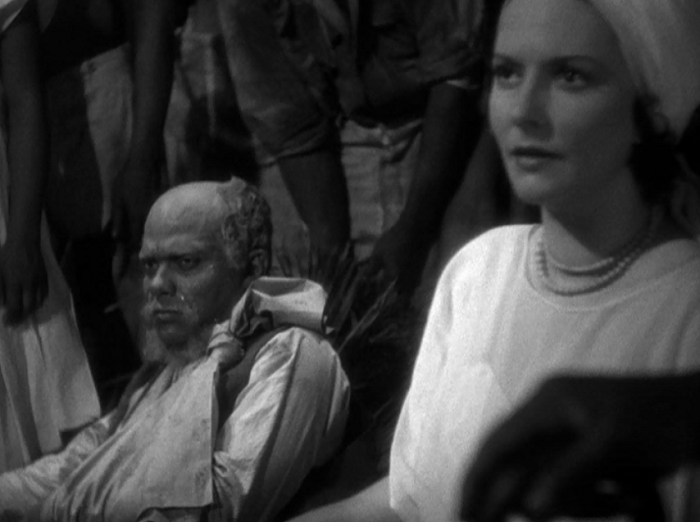
Here’s Juanita condemning her husband for his resistance and sentencing him to death– while the voodoo priest sits in the foreground. Though Juanita has broken free of her family’s trans generational domination, she has merely substituted one male master for another, something she’ll realize in due time.
Spoilers.
The film ends with what many have described as an anti-climax, as Lane must choose whether to shoot his wife before she murders his daughter or… not. Lane obviously has a deep love for his wife, and having to kill her breaks his heart. But it is what he must do, and it’s hard to blame him for that.
The film doesn’t waste much time after that to wrap up. The funeral for Juanita is unattended by her husband or daughter, but is rather encircled by a crowd of natives and a mournful Dr. Perez. It’s a silent affair, with looks of anger and defiance carried by the natives and a scowl of despair for Perez. For while they may have failed in their uprising this time, there’s no doubt any more as to who now really controls the power. By forcing Juanita into the situation, they’ve effectively destroyed the Perez legacy on the island. All that’s left is for Dr. Perez to die; both he and the natives know it.
While the film does feel anticlimactic, it also articulates a keen sense of loss. The boat trip back, with Stephen, Lunch, Gail and Nancy, is solemn save for an old spiritual that Lunch breaks into. It adds a quiet sense of hope: maybe for Stephen and Lunch to come to terms with what they lost, maybe for Gail to become the surrogate mother that Nancy will need.
End spoilers.
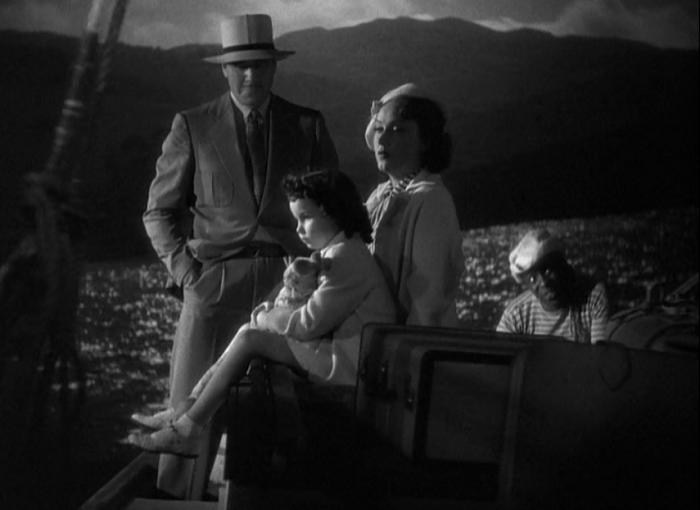
Luckily you’ve got a spare mom on the duff, kid.
People who demand their entertainment be strictly politically correct would still do well to steer away. It’s very easy to see this very much in the vein of white-man myth-making, a parable about how the whites must be eternally vigilant to keep the ignorant massive dark-skinned hordes at bay. But there’s a lot in this film about how power and responsibility intersect, and how the division of the races will only lead to bloodshed and death. No one ends Black Moon happy; everyone who survives survives for another day.
Black Moon is a puzzle, complex and nasty but still slick and exciting. It’s a corker of a movie with a great atmosphere on top of being filled with interesting subtext. But perhaps not for everyone.
Trivia & Links
- The Mystery File talks about the film’s source material (Black Moon by Clements Ripley) and how wildly different it is from the film.
- Andrew Sennwald for the New York Times rather enjoyed this flick. He complains that there are a couple of Hollywood touches that pop up, but when the film aims for brutality, it succeeds admirably.
- Oh The Horror! has a different take on the situation, seeing the film as radically anti-feminist insomuch as the film follows Lane rather that Juanita for its runtime. He notes:
It’s arguable that Black Moon has just as many issues with women as it does with people of color since it’s largely framed as Lane’s struggle to reclaim the idyllic wife that he’s lost to jungle fever. Here’s a movie that features a woman victimized by a childhood curse, yet she’s brushed over and essentially turned into the villain of the piece; meanwhile, her husband gets a new girl and presumably lives happily ever after.
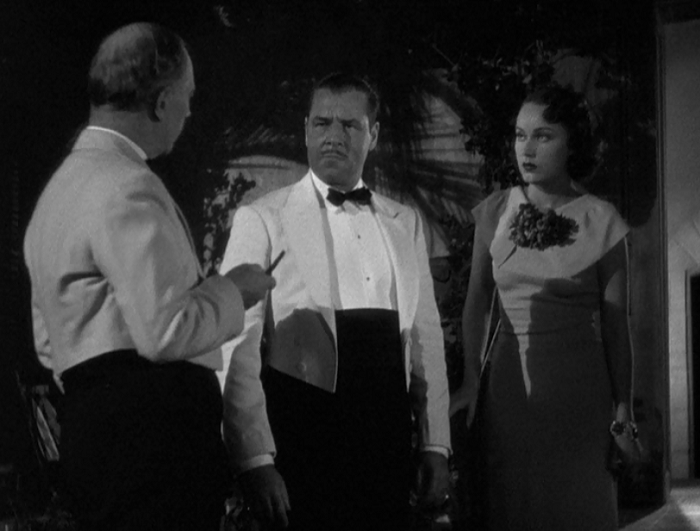
Impending massacre by the natives, but, hey, we have these tuxes, can’t let them go to waste.
- TCMDB has a lot on this one. I’m just going to quote their passage on Clarence Muse, because I can never hear enough about the guy to be honest:
One performer almost universally singled out for praise in Black Moon is Clarence Muse, cast in the potentially demeaning “comic negro” role of Lunch McClaren. Racial attitudes of the time are often a dicey proposition with modern audiences, and this film provides plenty of disconcerting material with its depiction of an entire island full of black residents constantly trying to butcher the handful of white overseers over a century-long struggle. Writer John T. Soister offers his own take on the McClaren role (an American black man from Georgia offered as contrast) in Up from the Vault: Rare Thrillers of the 1920s and 1930s, praising him as “adventurous, articulate, and very quick to distance himself from the locals… He can be humorous without being foolish, and his conversations with Jack Holt’s character are man to man, not white man to black man; their relationship remains refreshingly condescension free… Purposefully or not, the screenplay subtly contrasts the American black man with the Caribbean black man. The former is in every way more independent and responsible and less easily led than his island counterpart.” Holding a Juris Doctor degree and boasting considerable musical theater skills, he was one of the most in-demand black actors of the 20th century, graduating to mainstream Hollywood films such as Watch on the Rhine and Alfred Hitchcock’s Shadow of a Doubt (both 1943) and remaining active onscreen until shortly before his death with late-career roles including The Black Stallion (1979) and Car Wash (1976).
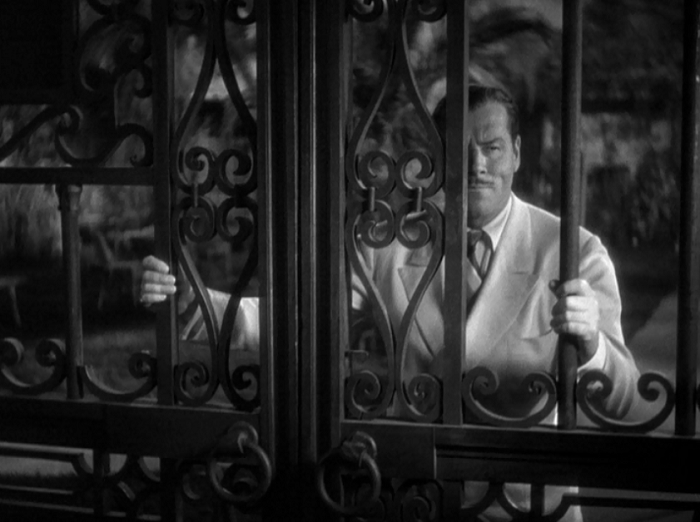
As previously noted, the fence doesn’t just keep people out, it keeps people in as well.
- The Acidemic Film Journal, always happy to be contrarian, labels this film as progressive. And for once, I agree with them. Some of their reasoning:
With its mix of horror-action and white man’s burden-coded proto-feminism it just may be the least racist and sexist of all 1930s zombie movies –a kind of pre-Lewton Lewton where women understand the supernatural realms instinctively while the men try to keep it all buried via tactics like condescension, humiliation, beatings, and threats, none of which work a damn.
Gallery
Hover over for controls.
Awards, Accolades & Availability
- This film (understandably) appeared in the Wikipedia List of Pre-Code Films.
- This film is available on Amazon, and can be rented from Classicflix.
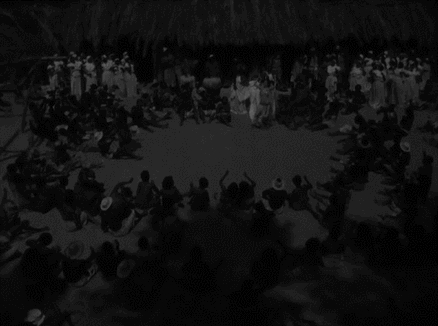 |
Comment below or join our email subscription list on the sidebar!Home | All of Our Reviews | What is Pre-Code? |

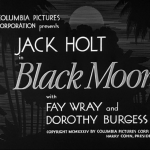
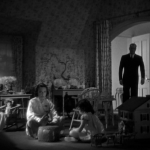

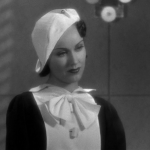
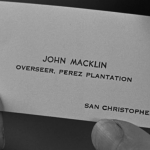
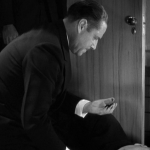
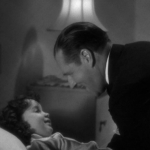
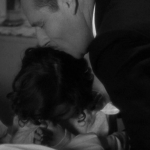
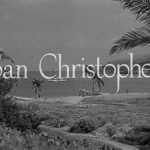

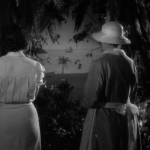
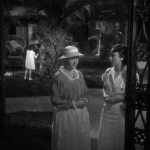
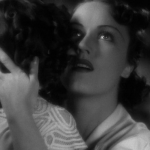
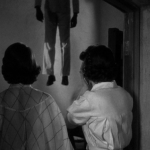
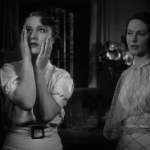
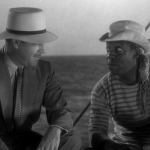
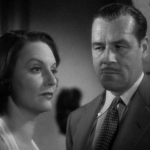
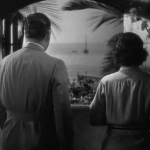
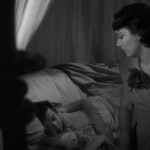
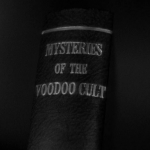
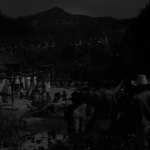
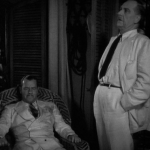
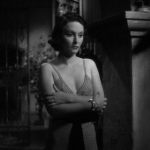


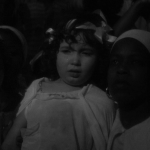
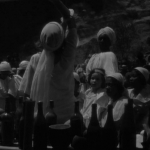
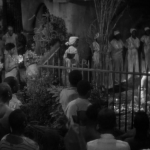
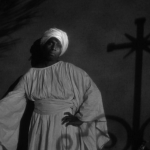




1 Comment
Martin Zimmerman · June 15, 2018 at 6:27 pm
Stumbled upon your page after looking for reviews of BLACK MOON, and I’m impressed. Plenty of observation and opinion, and quite interesting. Kudos to you, sir!
Comments are closed.